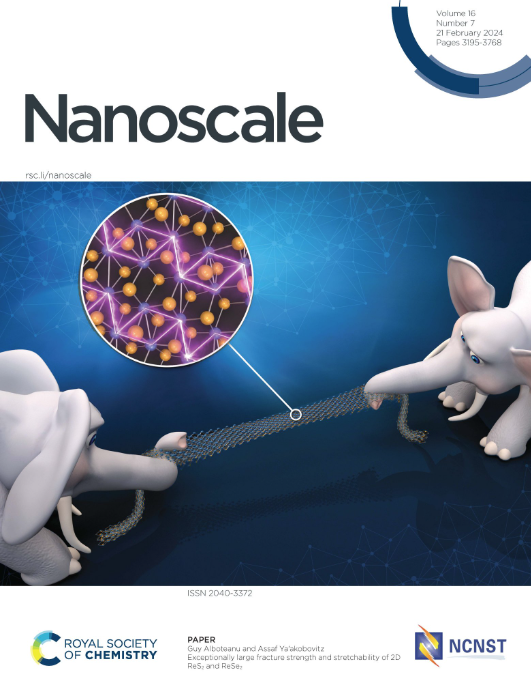Synthesis of Au13-based building block clusters for programmed dimer formation and Au13 cluster dimer photoexcitation properties
IF 5.8
3区 材料科学
Q1 CHEMISTRY, MULTIDISCIPLINARY
引用次数: 0
Abstract
Recently, there has been increasing attention on the fabrication of ligand-protected metal clusters composed of a finite number of noble metal atoms and on their precise assembly to elicit novel properties that are not observed in individual metal clusters. In the present study, we investigated (1) the behavior of ligand exchange reactions and (2) the selective and efficient formation of dimers composed of Au13 clusters. Specifically, we focused on a gold cluster consisting of 13 atoms coordinated to diphosphine ligands (dppe) and either chloride (Cl) or acetylide, i.e., [Au13(dppe)5X2]3+ (X = Cl or acetylide). The findings showed that Au13 clusters containing counter anion Cl− undergo a transformation under specific conditions, where Cl− acts as a ligand (rather than an anion) directly coordinated to the Au13 surface. The introduction of two types of ligands—chelating ligands that coordinate to the Au13 cluster surface and end-capping ligands that suppress polymerization—enabled the synthesis of a building block molecule which are programmed to selectively and spontaneously form Au13-based dimers upon the addition of metal ions. The designed building block clusters indeed selectively and efficiently formed stable dimers composed of two Au13 clusters in the presence of iron ions. Furthermore, in the Au13-based dimer, the phosphorescent Au13 moiety is directly connected to a coordination site that exhibits quenching effects, enabling rapid intramolecular photoinduced charge transfer even with a small driving force.基于Au13的可编程二聚体构建块簇的合成及Au13二聚体的光激发特性
近年来,人们越来越关注由有限数量的贵金属原子组成的配体保护金属团簇的制备及其精确组装,以获得在单个金属团簇中无法观察到的新性质。在本研究中,我们研究了(1)配体交换反应的行为和(2)由Au13簇组成的二聚体的选择性和高效形成。具体来说,我们关注的是由13个原子配位到二膦配体(dppe)和氯(Cl)或乙酰基组成的金簇,即[Au13(dppe)5X2]3+ (X = Cl或乙酰基)。研究结果表明,含有反阴离子Cl -的Au13簇在特定条件下发生转化,其中Cl -作为配体(而不是阴离子)直接配位到Au13表面。引入两种类型的配体——与Au13簇表面协调的螯合配体和抑制聚合的端盖配体——使构建块分子的合成成为可能,这些构建块分子被编程为在添加金属离子时选择性地自发形成Au13基二聚体。所设计的构建块团簇确实在铁离子存在下选择性和有效地形成由两个Au13团簇组成的稳定二聚体。此外,在基于Au13的二聚体中,磷光Au13片段直接连接到具有猝灭效应的配位位点,即使在很小的驱动力下也能实现分子内的快速光诱导电荷转移。
本文章由计算机程序翻译,如有差异,请以英文原文为准。
求助全文
约1分钟内获得全文
求助全文
来源期刊

Nanoscale
CHEMISTRY, MULTIDISCIPLINARY-NANOSCIENCE & NANOTECHNOLOGY
CiteScore
12.10
自引率
3.00%
发文量
1628
审稿时长
1.6 months
期刊介绍:
Nanoscale is a high-impact international journal, publishing high-quality research across nanoscience and nanotechnology. Nanoscale publishes a full mix of research articles on experimental and theoretical work, including reviews, communications, and full papers.Highly interdisciplinary, this journal appeals to scientists, researchers and professionals interested in nanoscience and nanotechnology, quantum materials and quantum technology, including the areas of physics, chemistry, biology, medicine, materials, energy/environment, information technology, detection science, healthcare and drug discovery, and electronics.
 求助内容:
求助内容: 应助结果提醒方式:
应助结果提醒方式:


